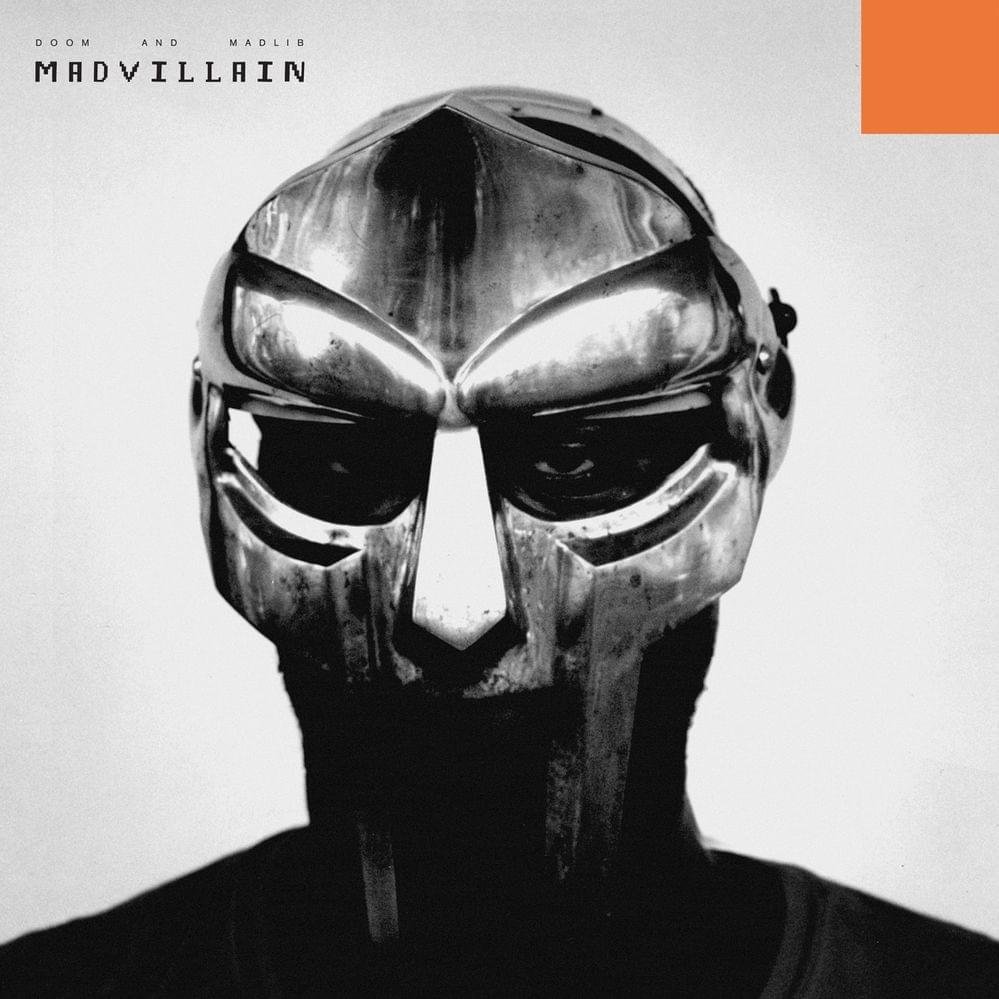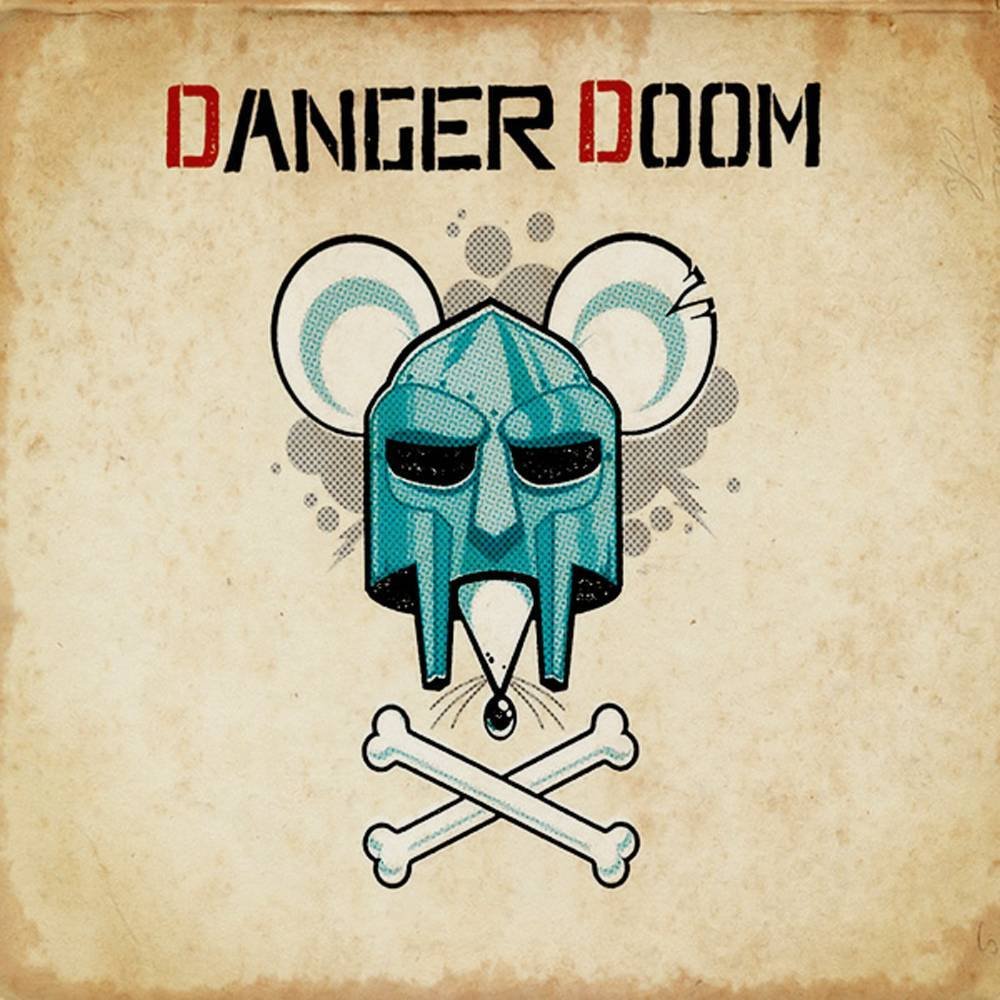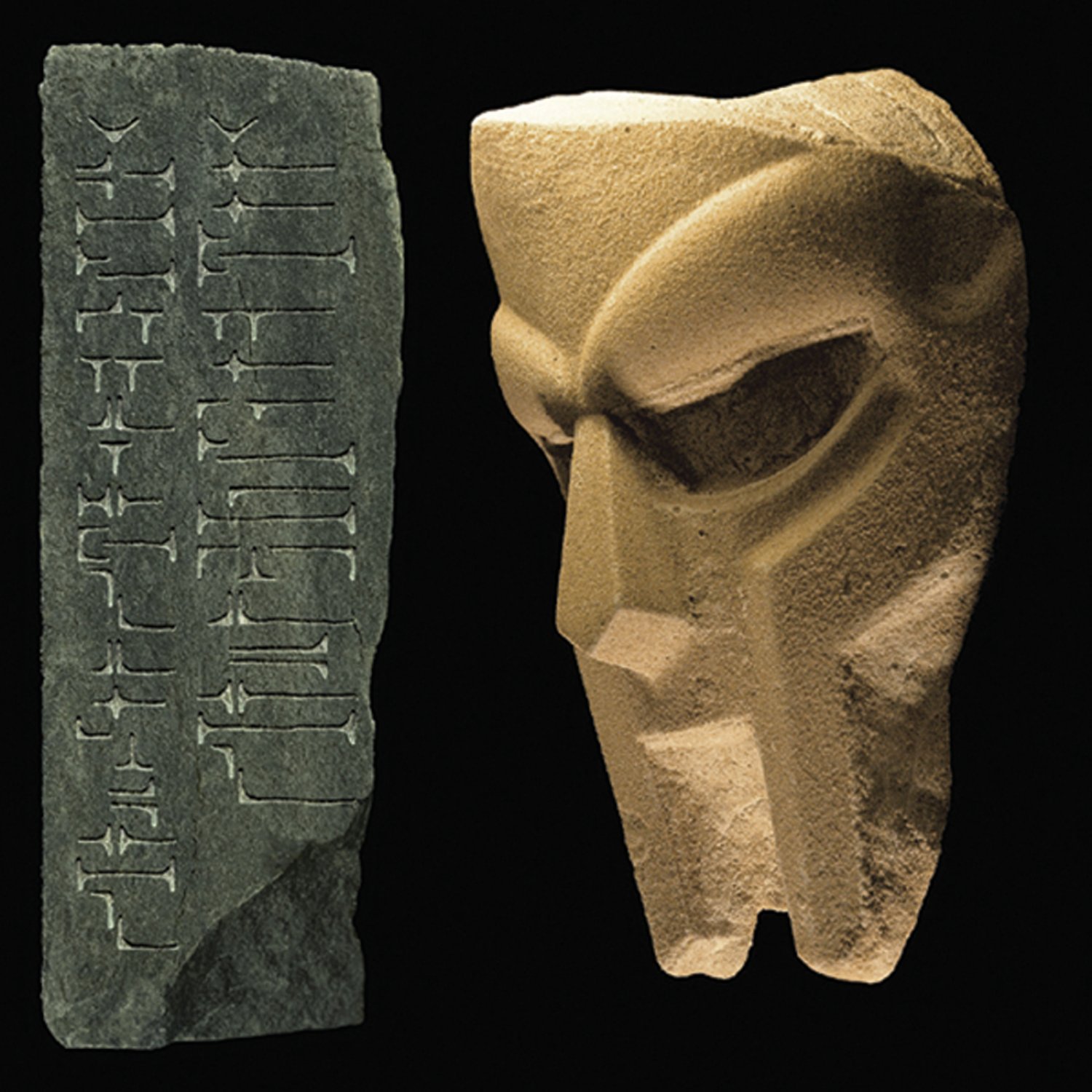Happy 25th Anniversary to MF DOOM’s debut album Operation: Doomsday, originally released October 19, 1999.
Fittingly, the origin of Daniel Dumile a.k.a. MF DOOM has become as familiar as the origin of the supervillain that inspired him. And like many great supervillain origins, it’s one born out of tragedy. DOOM earned his legendary status by executing one of the best and most unlikely reinventions for an emcee. Which makes Operation: Doomsday, released 25 years ago, his Fantastic Four #236 (1981), a memorable and perfectly crafted re-introduction.
Once known as the relatively carefree Zev Love X, a member of the group KMD, he retreated to the metaphorical shadows after music industry shenanigans and the death of his brother, Dingilizwe “Subroc” Dumile. Zev Love X didn’t emerge with his metal-faced visage overnight. There are stories of DOOM resurfacing on stage during the mid-’90s rocking a stocking mask, a la Ghostface Killah in ’92 and ‘93. DOOM began to fashion his “character” in the mold of Victor Von Doom himself. He proclaimed that he was “scarred” forever by his initial experiences in the music industry, and now was forced to cover his face to hide the damage.
Starting in 1997, DOOM began crafting his new material through Fondle ’Em Recordings, an ultra-indie imprint created by Bobbito Garcia, then one of the foremost champions of underground hip-hop. These 12”s contained dusty, unpolished tracks, with all of the lo-fi studio hiss and grime still dripping from it. Furthermore, DOOM changed his rhyme flow from upbeat and peppy to a heavy, drunken slur.
Back then, DOOM wore a store-bought mask. He took the piece of WWF merchandise, associated with the wrestler Kane, and spray-painted it silver. It would be another few years before he began to sport the flashier Gladiator/Maximus-fashioned guise.
All told, Fondle ’Em put out three separate DOOM 12”s from ’97 to ’98, each making DOOM more and more of an underground sensation. Eventually the label released Operation: Doomsday, a twisted and unorthodox hip-hop origin story that plays as part comic book, part Saturday morning cartoon, part monster movie, part fever dream. Released in the final quarter of 1999, it’s both reverent of the past and weirdly futuristic.
But it wasn’t just DOOM’s delivery and the grittiness of the sound that made his album so appealing. The lyrical content, approach, and musical backdrop were unique. He began to move away from the traditional 16-bar verse/chorus song structure. The beats, produced by DOOM himself, were a heady mix of Quiet Storm-era R&B, mixed with pounding hip-hop drums. He threw in bits of jazz, Stax Soul, and ’60s rock into the mix. He spoke through splicing bits of dialogue from Fantastic Four records/cartoons, Wild Style, Blaxsploitation flicks, and the Toho-era Godzilla movies.
Listen to the Album:
DOOM aligned himself with the Monsta Island Czars, a collective of homies and like-minded artists. It was comprised of artists like Kurious, who went back with DOOM from the KMD days, and contained members of other obscure ’90s hip-hop groups like Darc Mind and Dirt Nation. The crew was created by Percy “MF Grimm” Carey, another emcee from the ’90s who survived a brutal shooting that left him paralyzed from the waist down. In very Wu-Tang Clan fashion, each member of the collective adopted an alias of one of the aforementioned Toho monsters, the more obscure the better.
Much of Operation: Doomsday’s success comes from the strength of DOOM’s production. DOOM had a knack for taking records from the $2 bin at the record store and transforming them into something bizarrely soulful. Often he achieved the affect by speeding up the sample, from 33 1/3 RPM to 45, or by taking obscure sections of known songs, giving the resulting track a simultaneously familiar and alien feel.
For example, on “Dead Bent,” ostensibly the album’s unofficial single, DOOM samples the strings from the intro to Isaac Hayes’ “Walk on By,” speeding them up to almost past the point of recognition. He then adds the drums to Boogie Down Productions’ “Super Hoe” to solidify the boom-bap feel. DOOM begins the song by warbling “Always” by Atlantic Starr, before rapping, “Pure scientific intelligence with one point of relevance / Emcees whose styles need Velamints / And once the smoke clear, tell ’em it’s / The Super motherfucking Villain, n***a came through raw like the elements.”
If you, like me, purchased all of the Fondle ’Em 12”s, then you’d heard nearly two thirds of the album’s full-length songs. For what it’s worth, DOOM knew to start off Operation: Doomsday with material that he had yet to be released commercially. With “Doomsday,” DOOM pairs a smooth loop of Sade’s “Kiss of Life” with the drum track and scratches from “Poetry” by Boogie Down Productions. He delivers his lyrics in one long verse, barely pausing as he periodically drops in a hook. As he raps, he plays Jeopardy!, name-drops author Sidney Shelton, and makes reference to commercials by a defunct Long Island-based baby furniture store.
On “Rhymes Like Dimes,” DOOM takes the closing synthesizer solo to Quincy Jones and James Ingram’s maudlin, self-serious ballad “One Hundred Ways,” and transforms it into an upbeat, rollicking jam, interspersed with sharp record scratches. DOOM delivers one continuous, stream-of-consciousness verse, delivering lines like, “This fly flow take practice like Tae Bo with Billy Blanks / Oh, you're too kind! Really? Thanks! / To the gone and lost forever like ‘Oh My Darling Clementine’ / He hold his heart when he telling rhyme.” An argument can be made that Bobbito a.k.a Cucumber Slice is the star of the track, as he delivers a nearly two-minute outro of rambling ad-libs over this “Land O’ Lakes shit,” proclaiming his love for mashed potatoes, apple sauce, and buttery biscuits.
The album hits an early peak with “The Finest,” a rugged track featuring Tommy Gunn a.k.a. Megalon of the Monsta Island Czars. An S.O.S. Band sample has seldom sounded as hardcore as it does here, while the two pass the mic back and forth continuously between samples of dialogue from Sweet Sweetback’s Badass Song. DOOM is in a zone here, as he delivers lyrics like, “Scy-Fly, whole style stuck up / Used to talk to myself, I told him, ‘Shut the fuck up!’” and “Metal feet dented your car fender / My agenda up in the basement party tipping the bartender.” Tommy Gunn is very much up to playing the DMC to his Run (or vice versa), as he raps, “Stands up and hold 'em high, do or die / He got heat, no surprise, stop the beat, close your eyes.” And “Shorty in the all black, she think she all that / I called her, she said, ‘Don't call back!’ / She called me, now what you call that?”
Enjoying this article? Click/tap on the album covers to explore more about MF DOOM:
DOOM started to experiment with incorporating other rhyming personas throughout Doomsday. Besides assuming the role of “Scy-Fly” on the aforementioned “The Finest,” he morphs into King Geedorah/Ghidra on a pair of songs. First Is “Red and Gold,” where he uses the syrupy tones of The Deele’s “Shoot ’Em Up Movies” as a counter-balance to grim tales of “wig-twisting season” where murder for little reason is commonplace.
“Operation: Greenbacks” is another innovative team-up with Tommy Gunn/ Megalon, with the two trading mini-verses over a sample of Isaac Hayes’ version of “Our Day Will Come” along with vocals from Teena Marie’s “I Need Your Lovin’.” DOOM as Ghidra gives a particularly strong performance, delivering “parables of three in every other inference,” mimicking the three-headed attack of his giant monster namesake. “On the D-low, I slaughter solo emcees, they paper-thin,” he raps. “In they Polo, Nautica, or DK for Men.”
“Hey!” is another of the album’s highlights and one of DOOM’s most imaginative creations. He takes the first 15 seconds of the Scooby-Doo theme song, as he masterfully chops and re-sequences the parts to turn it into one of the most sinister tracks on the album. On the mic, DOOM boasts about his “rhyme of the month two page long / Busting off two gauges with my cape on wrong.”
“Gas Drawls” is one of the album’s most understated entries, as DOOM delivers sharp rhymes over portions of Steely Dan’s “Black Cow.” Of all the tracks on Doomsday, it’s probably closest to a KMD-styled track, both in terms of DOOM’s delivery and musical composition. Which makes sense, given that there are apparently versions of this song that date back to the mid-’90s.
“Tick, Tick” is the first in a continued tradition of DOOM’s albums: tracks that don’t feature DOOM at all. “Tick, Tick” is one of the best of its kind, an extremely unorthodox and off-kilter solo track by MF Grimm. In a stroke of genius that only an artist like DOOM has been able to pull off, he samples the violin outro from The Beatles’ “Glass Onion,” which starts very slow and gradually speeds up, making it pretty difficult to rhyme over. DOOM takes the section and loops it at multiple speeds, creating a constant and almost unsettling change in tempo. He follows suit by adding shuffling, neck-snapping drums that alter the song’s feel every few bars.
On the lyrical end, Grimm executes flawless verbal acrobatics, altering his rhyme speed and cadence as the track dictates, rapping, “Every attack, we switch like the Wu-Tang symbol / Still kill Jack even though quick and nimble / Plain and simple, pick n****s off while they ballin’ / And die old like Stalin.”
DOOM teams up with Kurious on “?,” which brings the album to a rather introspective close. DOOM stalks across the track, rhyming over sections of a sped-up sample from Isaac Hayes’ “Vykki” and the drums from T-Ski and Valley’s “Catch the Beat.” With his first verse, he describes his exploits in the third person, cleaning his mask with gasoline and proclaiming to be “hard hitting like puffing a whoola with Lieutenant Uhura.” On his second verse, DOOM reflects on his own life and his experiences with his gone-too-soon younger brother, reminiscing they were “truly the illest dynamic duo on the whole block / I keep a flick of you with the machete sword in your hand / Everything is going according to plan, man.”
Operation: Doomsday remains extremely influential to a large number of up-and-coming emcees and other firmly established left-of-center artists. DOOM’s musical approach serves as a template for hip-hop’s now flourishing gritty and dusty DIY underground scene. Artists like Tyler, The Creator, Earl Sweatshirt, and the entire Odd Future crew have listed DOOM among their influences. Furthermore, even artists like Flying Lotus and Thundercat consider DOOM and this album as essential to their artistic development.
Operation: Doomsday would lead to a DOOM renaissance in the early and mid ’00s, peaking around 2003-04, as he released a string of classic projects, contributed guest appearances on many tracks, and even produced some timeless material for other artists. It’s up for debate whether this first step was his best, but it’s certainly a great album and one of the best releases of the final year of ’90s hip-hop.
LISTEN:
Editor's note: this anniversary tribute was originally published in 2019 and has since been edited for accuracy and timeliness.





